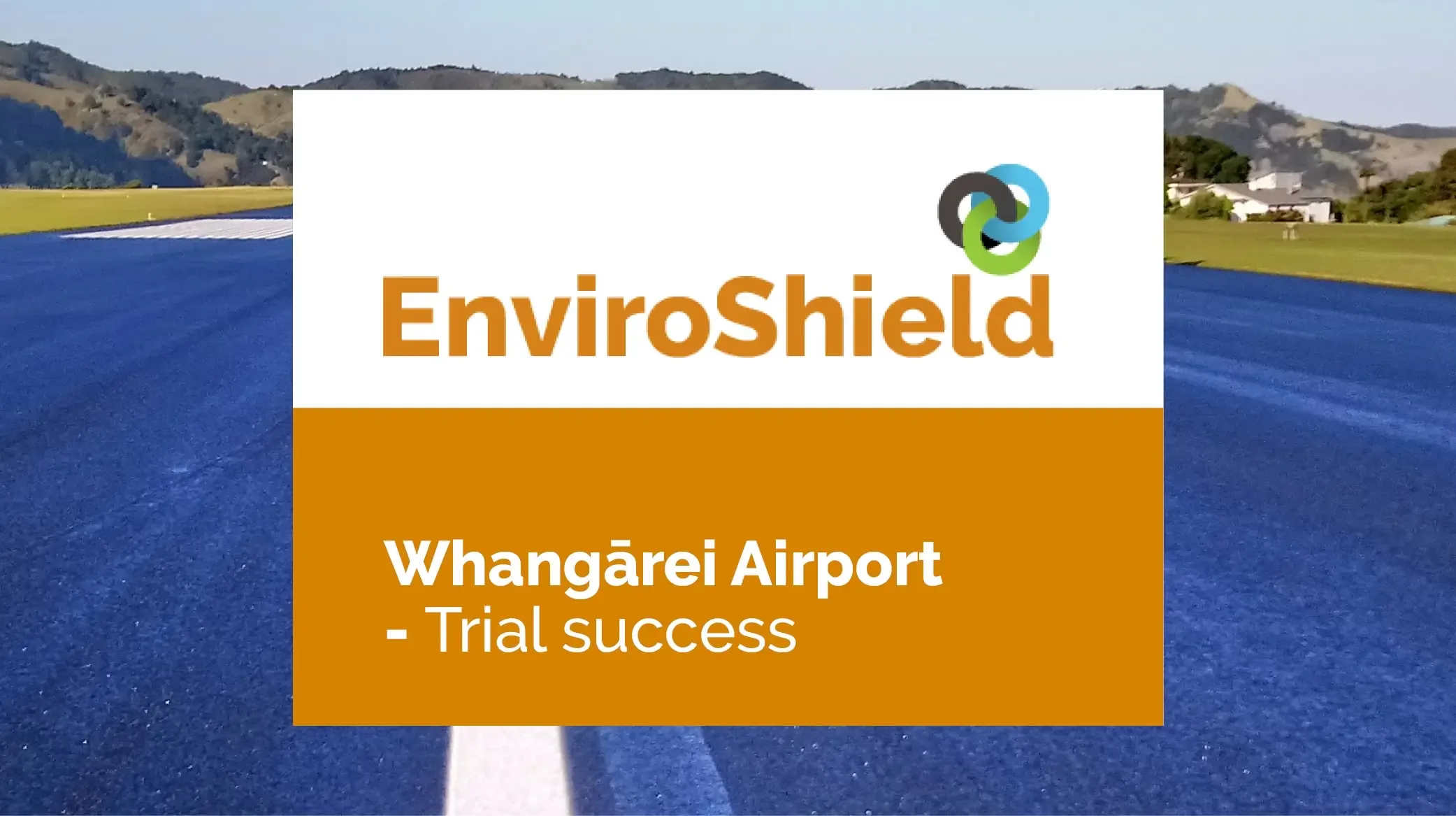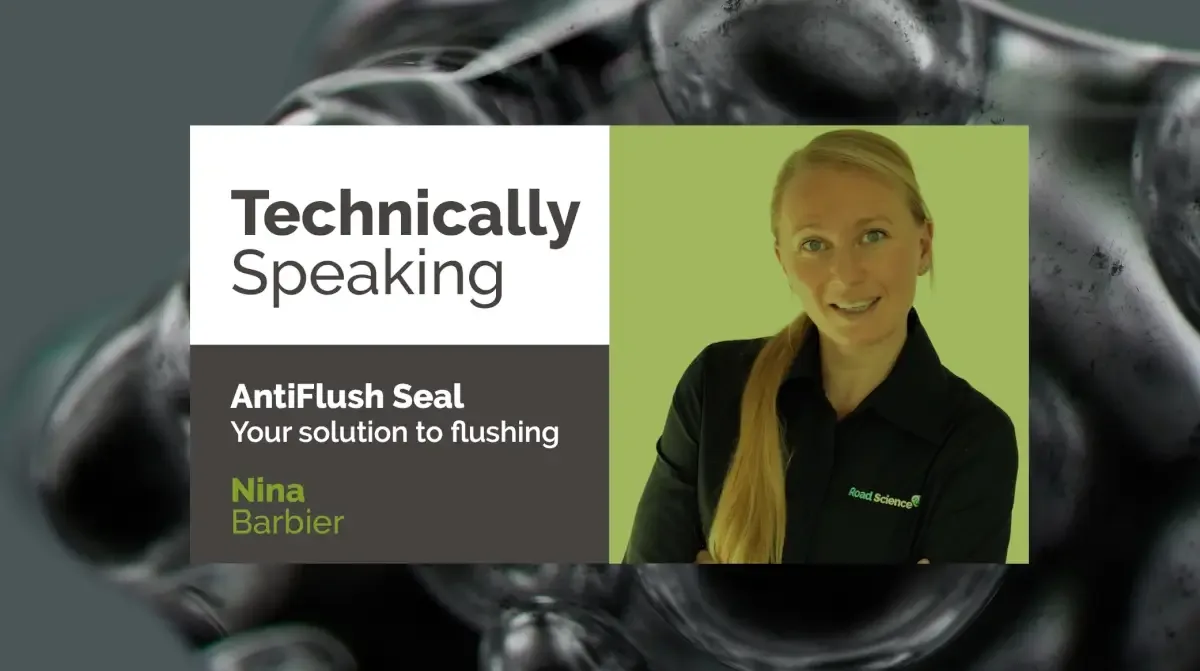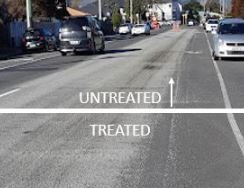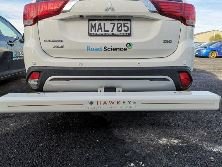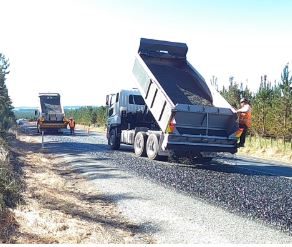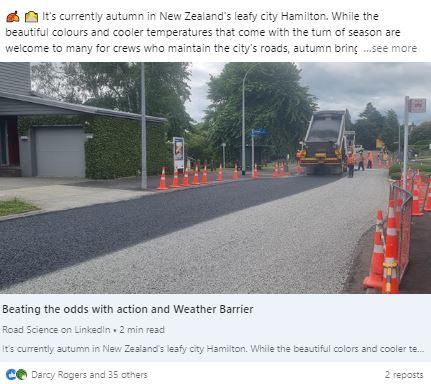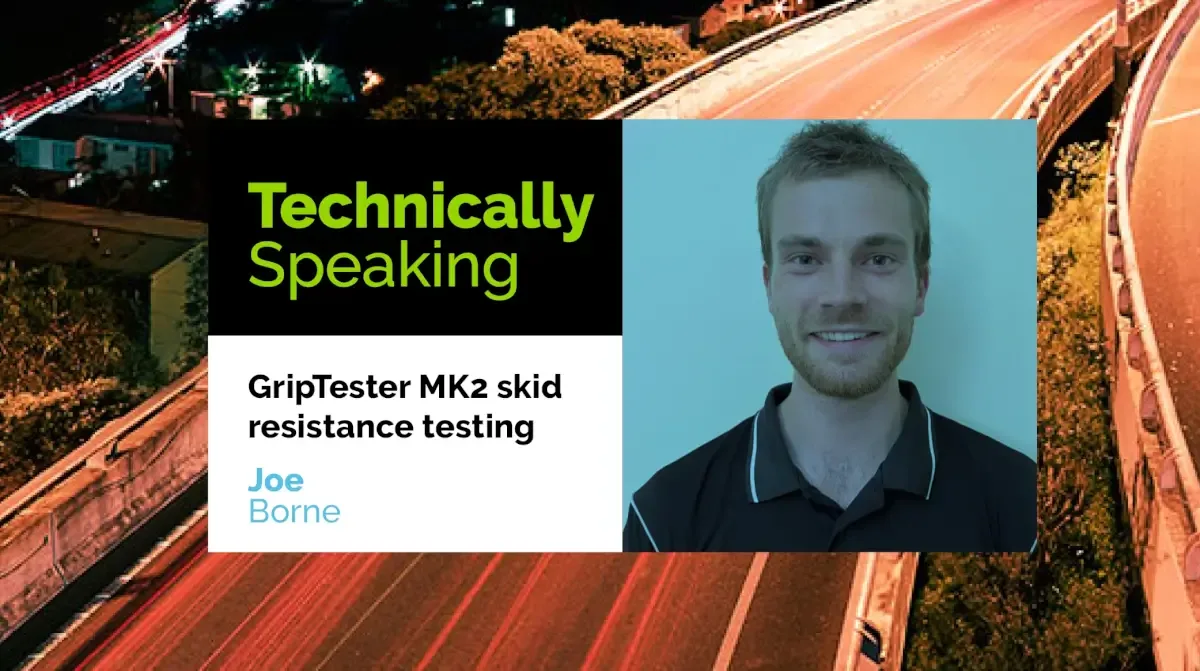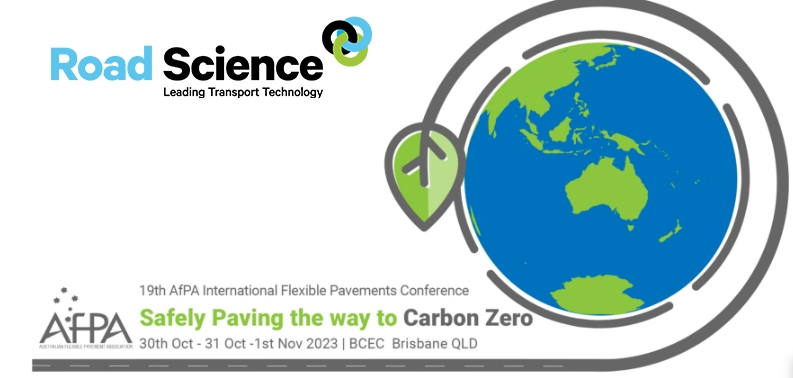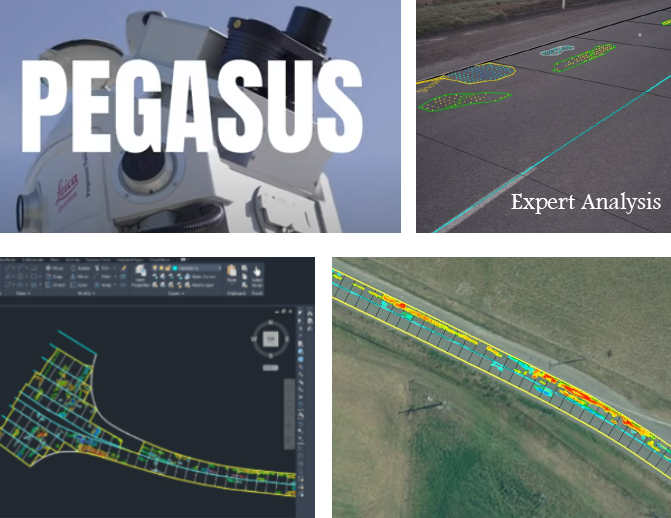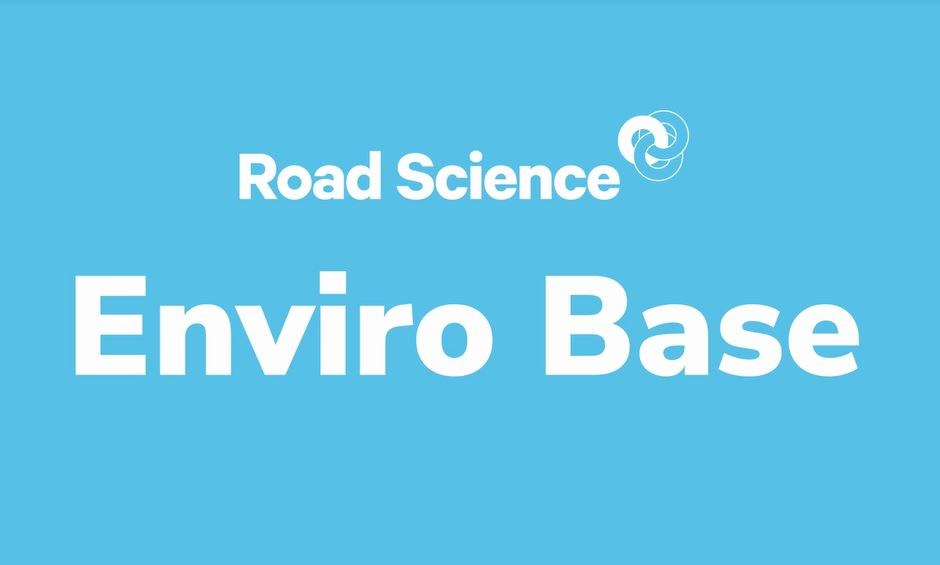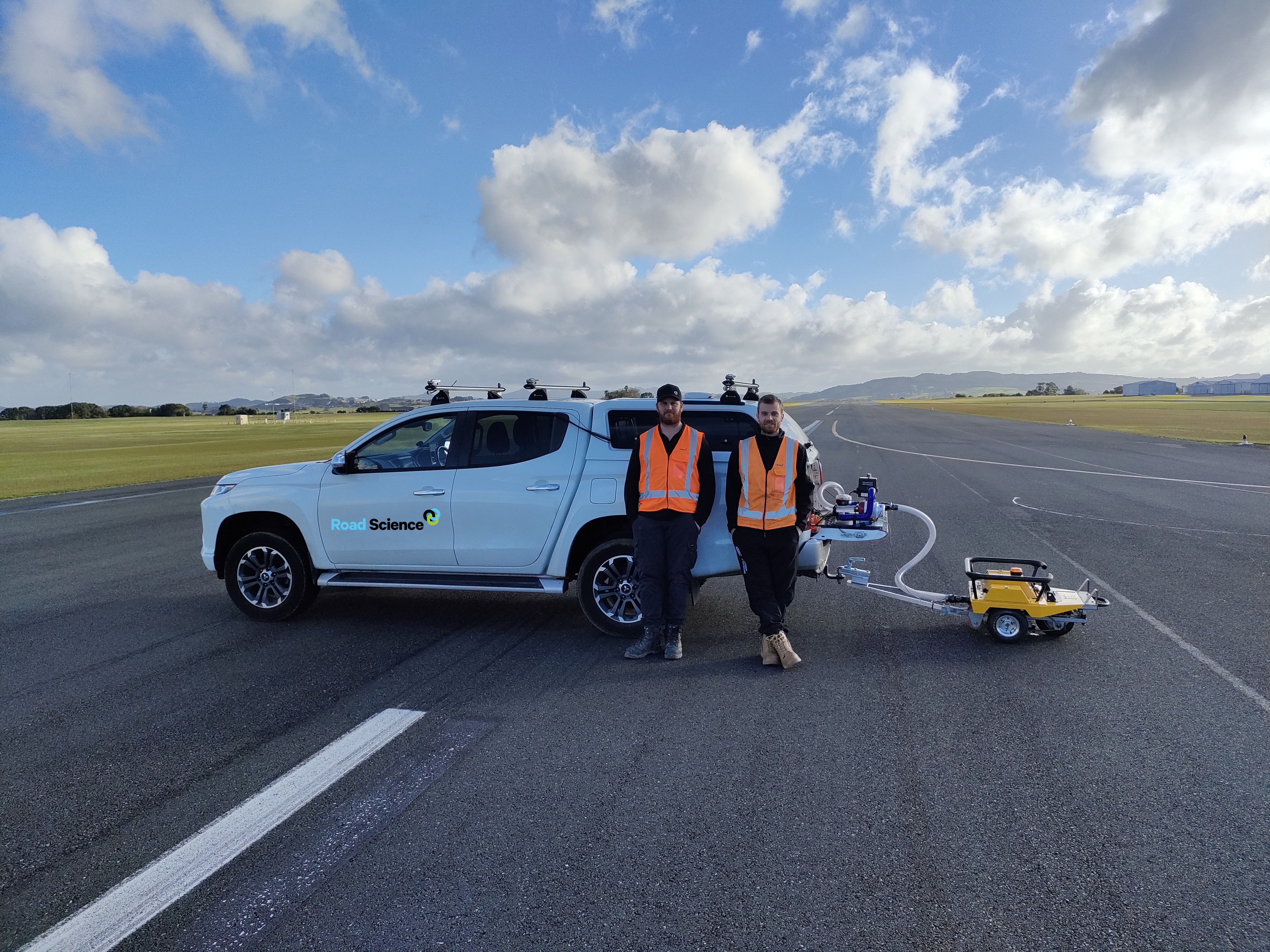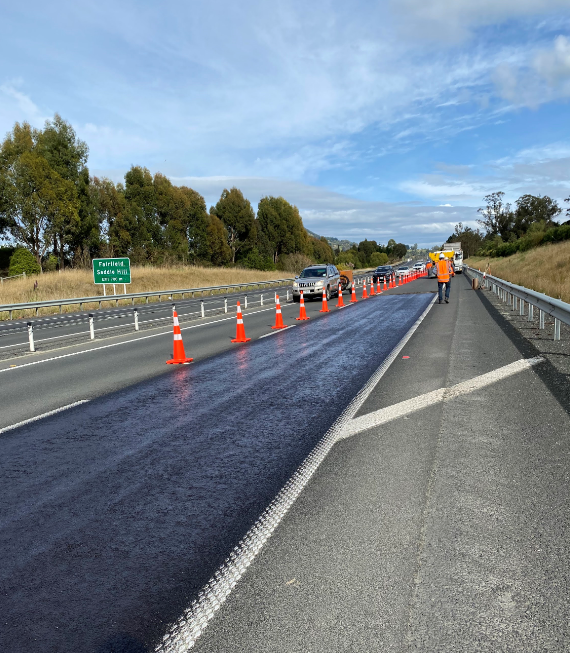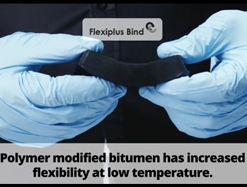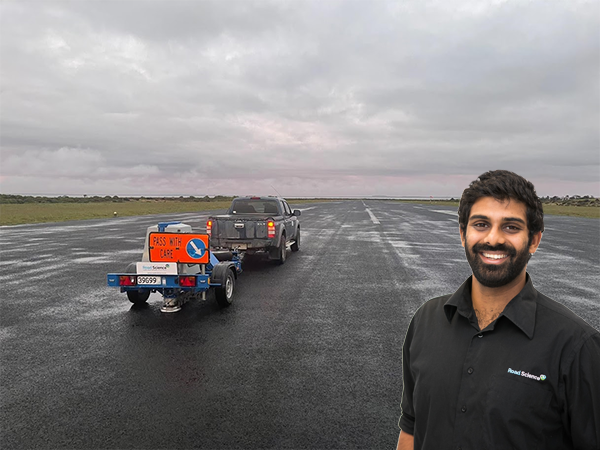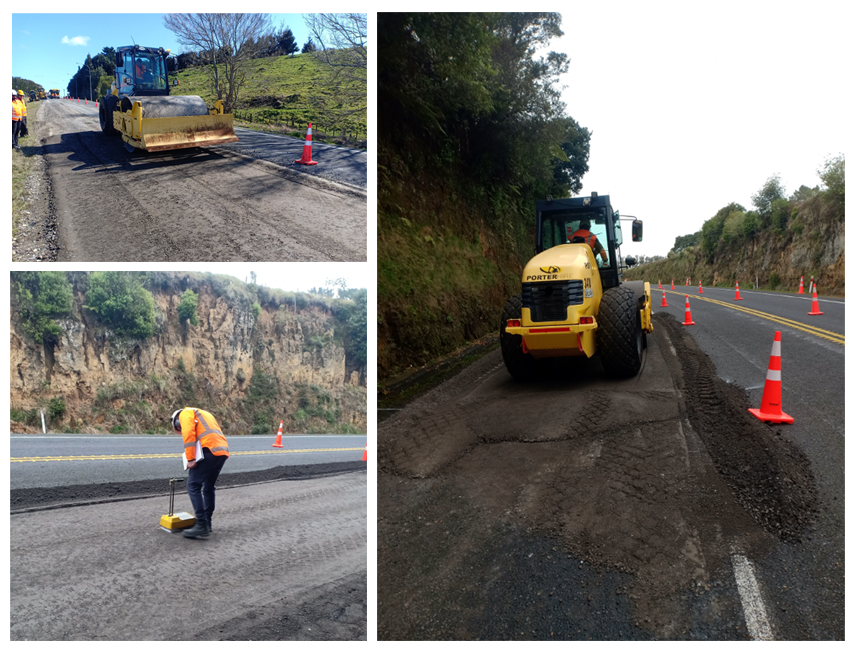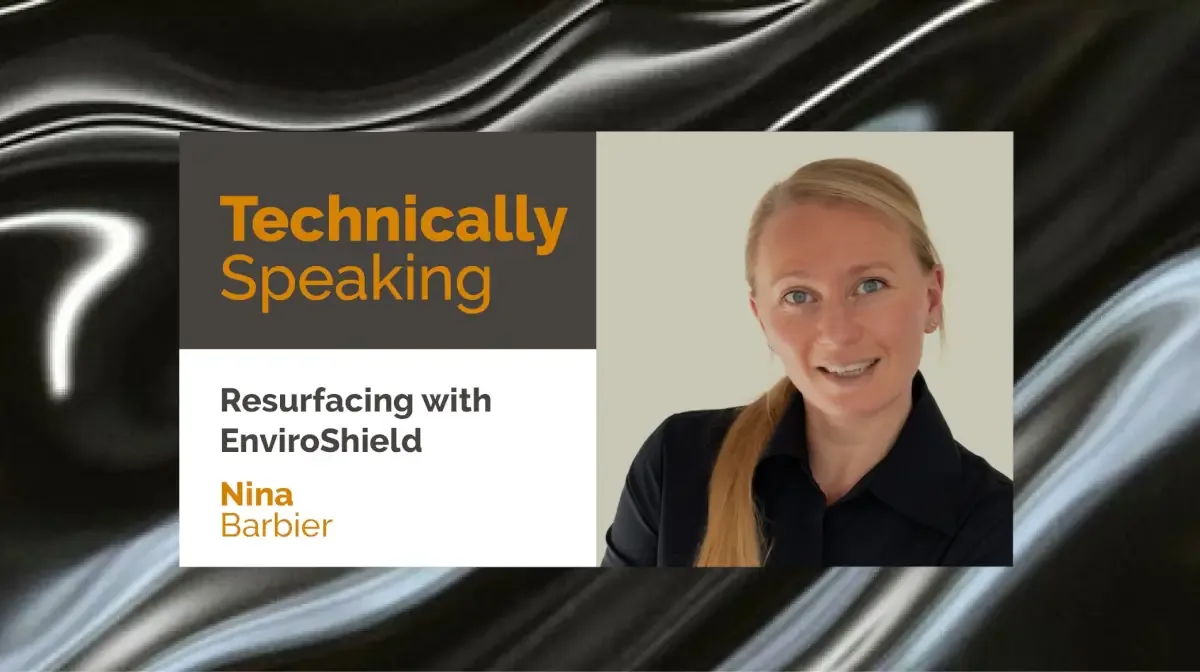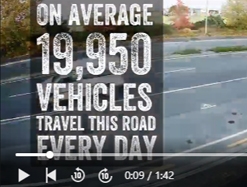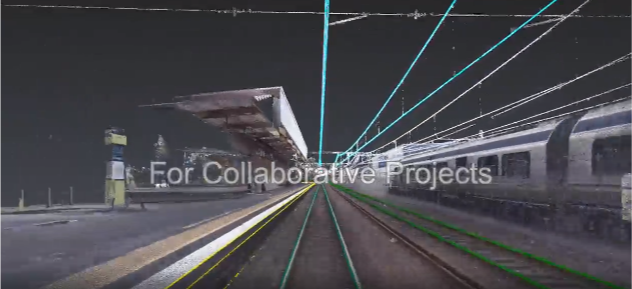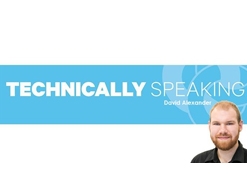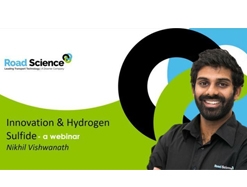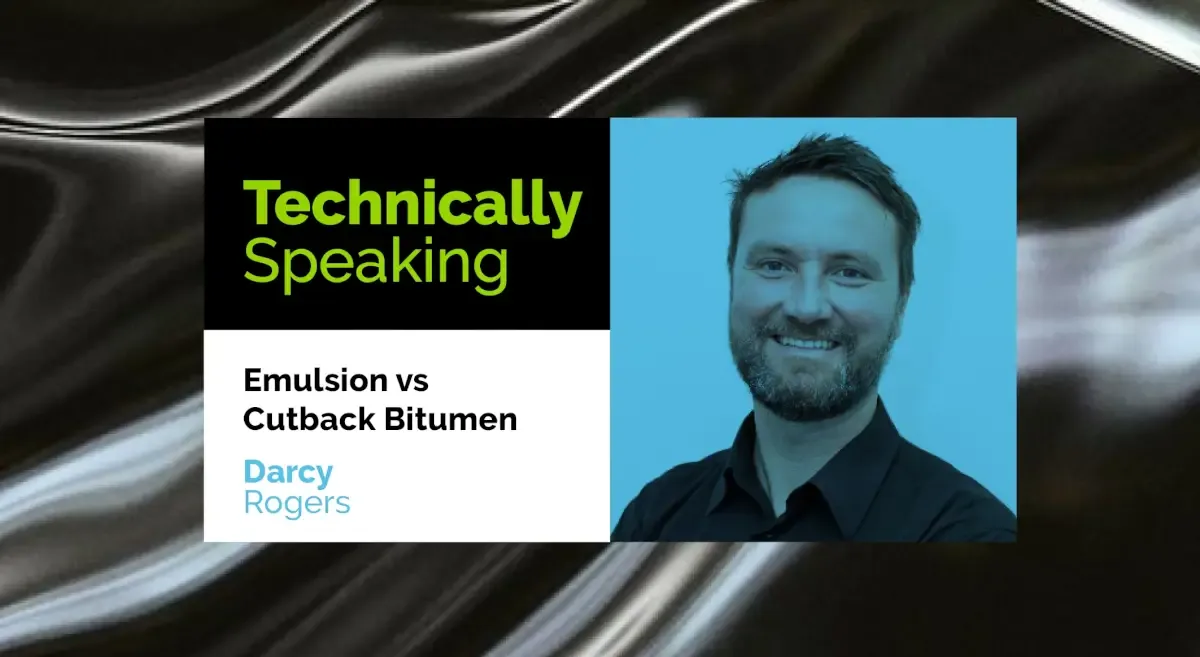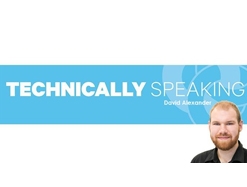AntiFlush Seal - Trial success stories
07 May 2025
Focusing on two trial sites (commencing in 2022 + 2024), this case study outlines how AntiFlush Seal by Road Science will keep flushing at bay ...
Flushed roads – what’s going on beneath the surface?
Flushing is a very common issue on Kiwi roads, and it mostly comes down to our variable temperatures. As the day heats up, any moisture trapped in the pavement starts to evaporate, building up pressure under the surface. Eventually, that pressure needs an escape route — so it forces its way through the surface binder layer, creating tiny vents;
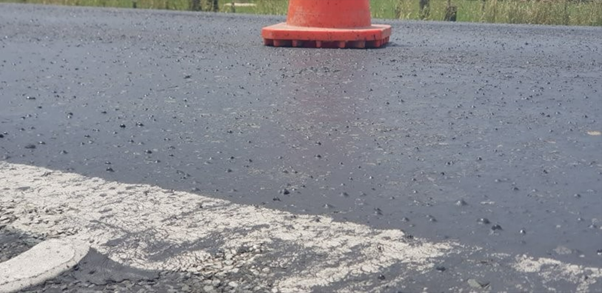
That pressure build-up facilitates the upward migration of bitumen from the sub-layers. Over time, this leads to a build-up of bitumen on the road surface. The result? Loss of texture, reduced skid resistance, and the need for frequent resealing — often every couple of years. If you’re keen to dive deeper into the science of flushing, check out our Product Development Manager, Simeon Halls’ Technically Speaking article, The power of water – Lead contributor to flushing.
Introducing AntiFlush Seal
AntiFlush Seal was specifically developed by Road Science to slow down or stop the reoccurrence of flushing. Once it’s cured, it forms a tough but flexible membrane. It’s strong enough to handle water vapour pressure as the day heats up, while staying elastic so it won’t crack or break under stress. AntiFlush Seal is a highly modified bitumen emulsion with a high binder content, creating a solid, waterproof layer that stops bitumen from migrating to the surface — keeping the road texture intact and flushing at bay.
Putting AntiFlush Seal to the test ...
This case study looks at how AntiFlush Seal performs in real-world conditions — particularly its ability to maintain skid resistance and macro-texture. Working alongside Central Hawke's Bay District Council and the Downer Taranaki team, we’ve focused on two trial sites: SH3A in Taranaki (sealed in 2022) and Porangahau Road in Hawke’s Bay (sealed in 2024). Together, they give us a good look at how AntiFlush Seal stacks up against more traditional treatments.
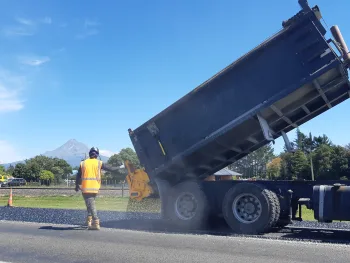
SH3A Trial Site - Taranaki
In March 2022, a trial of AntiFlush Seal was carried out on SH3A just outside Inglewood, targeting a stretch of road that had a long-running history of flushing issues. Anti-Flush Seal was applied between two control sections, which were resealed with a 130/150 binder for comparison. Notably, one of the control sections experienced such severe flushing that it required re-asphalting during the 2023/24 season.
Looking back at the site’s history, the section where AntiFlush Seal was trialled had always performed worse in terms of skid resistance compared to the control areas (see Figures 1 and 2). These graphs show the percentage of each section falling below the investigatory and threshold levels — the markers we use to flag when maintenance should be scheduled or urgently prioritised.
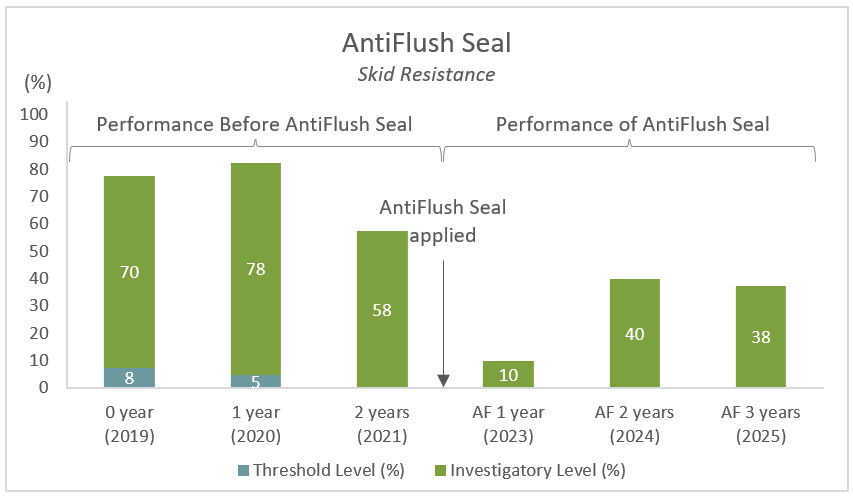
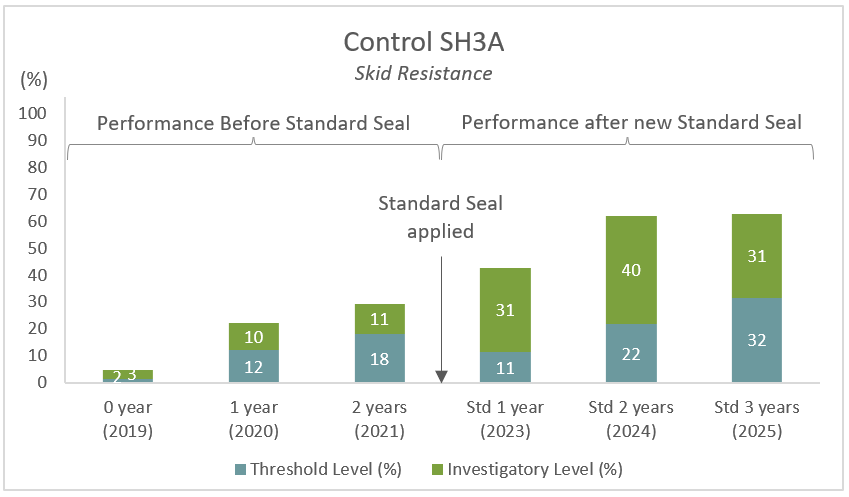
Three years after initial application, AntiFlush Seal is still going strong — outperforming earlier treatments on this stretch of road. Skid resistance remains noticeably better than what was recorded after the site was resealed with a conventional seal back in 2019.
It’s also clearly outperforming the control section. Since being applied, there’s been no skid resistance data falling below the “urgent” threshold — so no maintenance has been needed at all. The initial increase in skid resistance between year 1 to 2 can be attributed to minor chip loss during the first winter. However, the surface has since stabilised, with skid resistance data plateauing over the past two years.
In contrast, the control section has shown a steady decline since 2019. Even after it was re-sealed in 2022, its skid resistance has continued to decline — with an additional 10% of the section dropping out-of-spec each year. It’s a clear sign that conventional resealing only provides short-term relief. In fact, on sites prone to flushing, traditional treatments often perform about the same as doing nothing at all.
Historical skid resistance data (Figure 3) highlights that the AntiFlush Seal section is now performing at its best since 2005, with three consecutive years of data showing no areas below the urgent threshold.
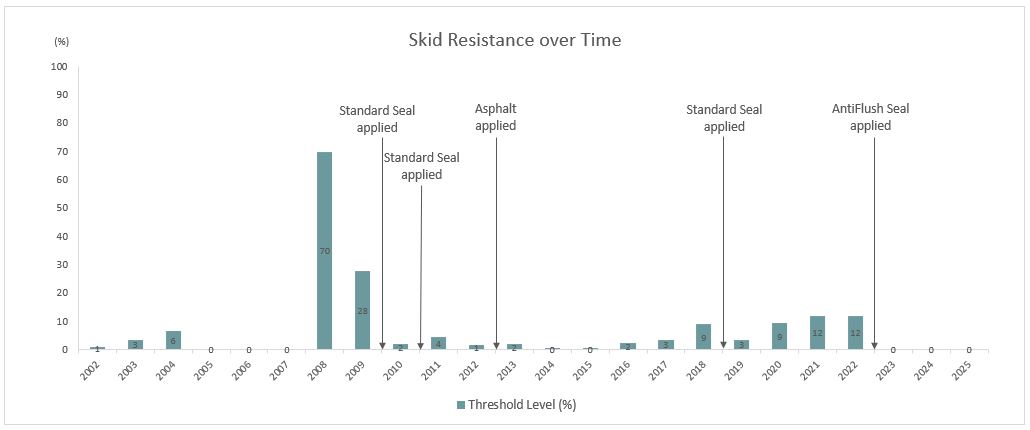
Macro-texture measurements (Figure 4) also demonstrate unprecedented results, with no remedial actions required since the application of AntiFlush Seal — an outcome never previously recorded at this site.
These findings reinforce that AntiFlush Seal provides a long-term solution for flushing-prone roads, offering superior texture retention and skid resistance compared to traditional resealing methods.
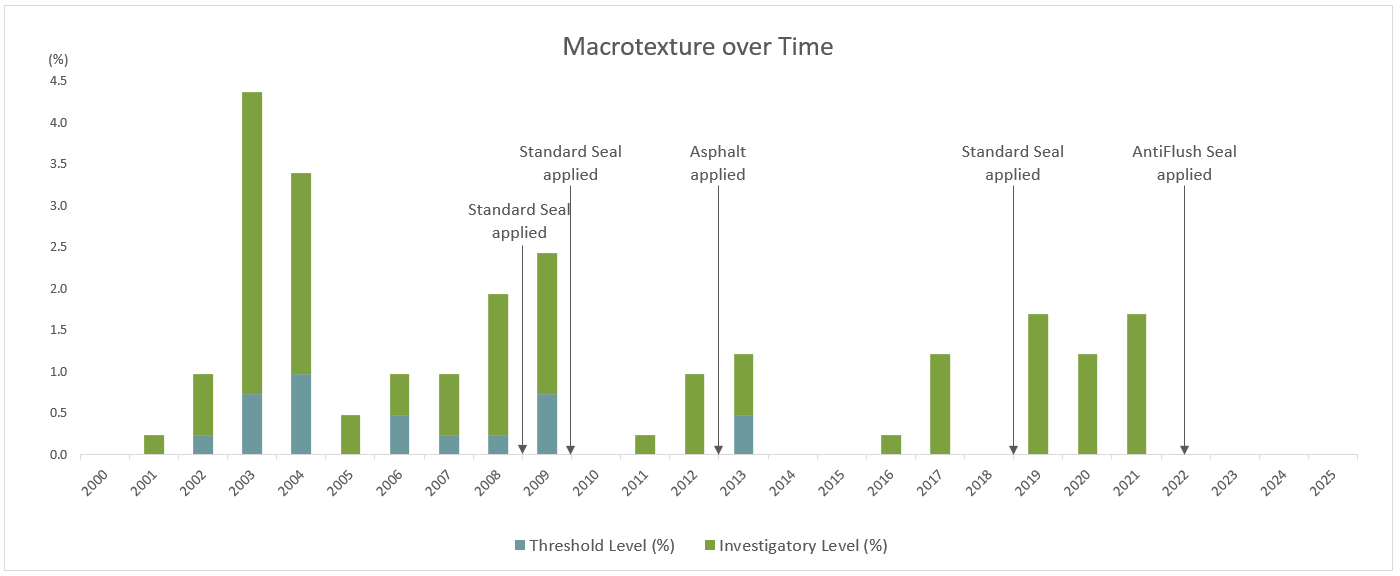
Porangahau Road Trial Site - Hawke’s Bay
The Porangahau Road site came with a bit of a challenge. It already had four recorded seal layers, and no proper pavement layer underneath — so by the time we started the AntiFlush trial, there were at least five seals stacked up.
The last reseal went down in November 2021, but even then, there were major issues. There was significant binder-rise in the wheel tracks, which was evident straight after sealing, and within days the site was badly flushed again;
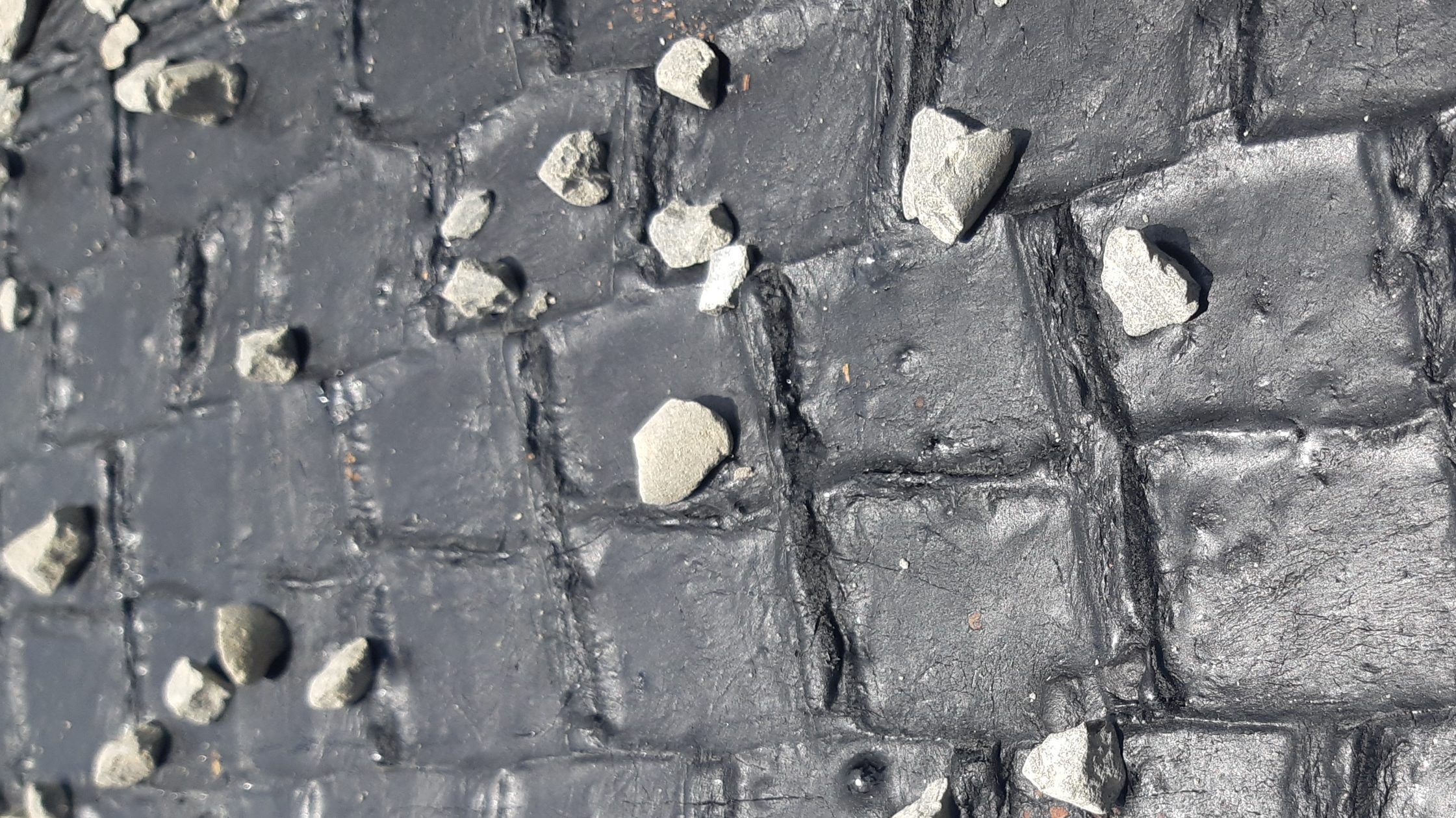
To keep an eye on how things were evolving, we used our Hawkeye data collection vehicle to survey the site’s macro-texture over time;
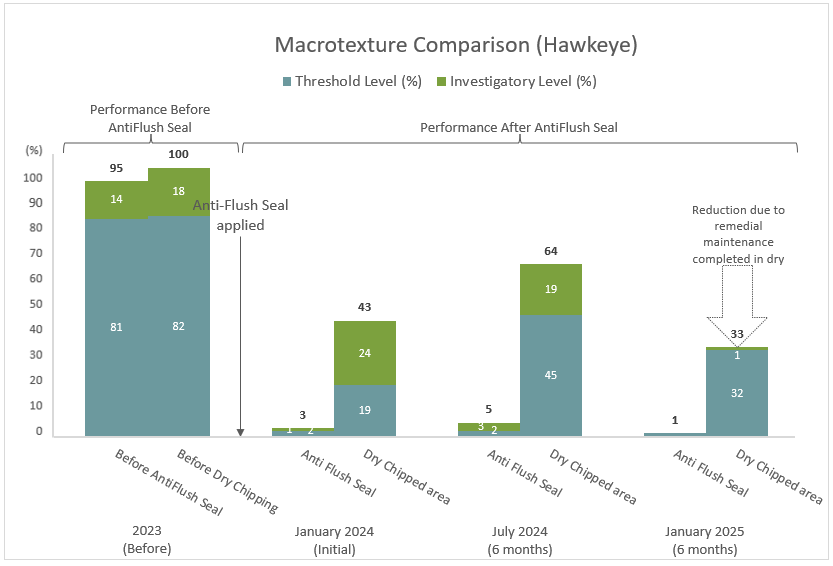
When we surveyed the site in December 2023, the data clearly showed serious flushing across both the future AntiFlush Seal and control sections. In January 2024, AntiFlush Seal was applied, effectively giving the surface a reset. What had been a nearly failing road was brought back up to near full compliance by performance standards.
While no formal control was applied at the same time, one end of the AntiFlush Seal site was dry-chipped during the trial, and this section served as the “control” for comparison. The dry-chip treatment slightly improved the texture immediately after application.
Six months in, the AntiFlush Seal section was still looking great, while the control area had broken down quickly. A review after one year confirmed the trend — AntiFlush Seal continued to perform strongly, while the control area kept deteriorating. Interestingly, the control section showed a slight improvement in the last six months, likely due to remedial treatment being applied.
Conclusion
The trials in both Taranaki and Hawke’s Bay show that AntiFlush Seal is a solid performer when it comes to tackling flushing on our roads. Where traditional reseals only give short-term results, AntiFlush Seal delivers lasting skid resistance and texture — cutting down the need for constant maintenance.
The data confirms that its strong, elastic membrane successfully prevents bitumen migration, maintaining road performance over time. These results demonstrate how AntiFlush Seal is a cost-effective and durable solution for managing flushed roads across New Zealand.
Converted to the positives of this flushing treatment?
Learn more about AntiFlush Seal, or connect with our team HERE
